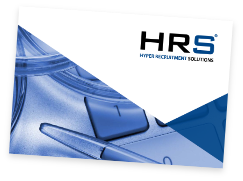
As much as we might all like to think that we are
immaculately impartial when it matters – such as when we are leading a HR team recruiting for a position – the fact
of the matter is that we are human and therefore as prone to bias, whether
inadvertent or otherwise, as anyone else.
There have certainly been enough signs of that down the
years. One controversial report cited a few years ago by The Telegraph, for instance, suggested some
bias among recruitment agencies against black and ethnic minority candidates.
Meanwhile, a recent BBC Inside Out study found that a jobseeker with an English-sounding name was offered three times
more interviews than a candidate with a Muslim name, despite the two CVs
that were sent out detailing the same level of qualifications and experience.
So what are some of the forms of bias from which your own hiring team could be suffering?
1. Confirmation bias
We’ve all probably had times when we’ve glossed over news
articles containing facts that don’t comply with our political views, while remembering and agreeing with
those that do.
Well, a similar thing happens in recruitment – you might
have certain preconceived views about a candidate and seek out information in
their CV and at interview to confirm those pre-existing beliefs, while discounting any information that goes against those
beliefs.
2. Overconfidence effect
This term refers to when a person’s subjective confidence in
their judgements outweighs their objective accuracy. You may be overly
confident, for example, that you always make the right hiring decision whenever
you go by gut instinct.
This form of bias often originates from confirmation bias –
you may remember when relying on your gut instinct led to a great hire, but not
when it resulted in disaster.
3. Similarity attraction effect
This is the tendency
for people to look more favourably upon and seek out others who are similar to
them. In the recruitment context, this may manifest in viewing candidates who
have the same hobbies and interests as you or support the same football team
more positively.
That might not be such a great problem if you’re drawn to
people with a similarly strong work ethic to you. However, all too many hiring
managers can be swayed by factors that
have nothing to do with on-the-job performance.
4. Halo effect
Do you presume that just because a given candidate is good
in one way – for instance, is friendly and agreeable – they’ll also be good in
other ways, such as in the sense of possessing the right technical skills for
the role?
You may think you would never view candidates in such a way.
However, many hiring managers fall into the trap of liking a candidate so much
that they fail to carry out the required objective analysis of their job-related
skills and abilities.
5. Illusory correlation
If you’ve been asking those wacky interview questions that
seemingly have nothing to do with the actual responsibilities of the role –
such as “Show me 10 uses of a pencil” or
“Which piece of fruit would you be?” – you might want to ask yourself whether
you are suffering from illusory correlation bias.
This is the tendency
to perceive a relationship between things – such as people, events or
behaviours – even when such a relationship doesn’t exist. There is no evidence
that ‘weird’ interview questions like the above, for instance, actually predict
job performance.
How can such biases
be eliminated?
Many ways have been tried
of minimising bias in the recruitment process. Name blind CVs have become
increasingly popular among certain big employers, while the use of video
interviews in the early stages of screening can also help to offset
discrimination by asking the same questions of every candidate.
Another way of helping to ensure that hiring decisions are not made due to personal or cultural bias
is to keep a record of the reasons why candidates were rejected. This can be a
good form of both internal and client feedback, and certain patterns in your HR
analytics may show signs of bias.
It’s impossible to completely
eliminate any trace of bias from your firm’s approach to hiring.
Nonetheless, by bearing all of the above in mind, your company can maximise the
likelihood of making the most impartial and informed decisions when seeking to
fill its science jobs.
Why not click through to learn more about the
varied recruitment
solutions that we provide to our employer clients here at Hyper Recruitment
Solutions, including candidate
screening?
